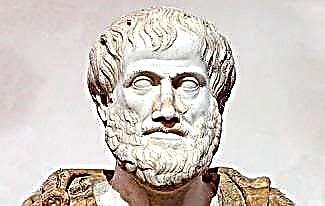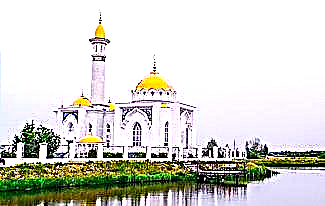There are few attractions in the world that have been transferred from one place to another, but Abu Simbel is one of them. This historical monument could not be lost due to the construction of a dam in the Nile bed, because the temple complex is part of the UNESCO World Heritage Site. Huge work was carried out on dismantling and subsequent re-erection of the monument, but today tourists can contemplate this treasure from the outside and even visit the temples inside.
A brief description of the Abu Simbel temple
The famous landmark is the rock in which temples for the worship of the gods are carved. They became a kind of indicators of the piety of the Egyptian pharaoh Ramses II, who gave the order to create these architectural structures. The great monument is located in Nubia, south of Aswan, practically on the border of Egypt and Sudan.
The height of the mountain is about 100 meters, the rocky temple is carved into a sandy hill, and it seems that it has always been there. The monuments are so exquisitely carved from stone that they are rightfully called the pearl of Egyptian architecture. The details of the four gods guarding the entrance to the temple are clearly visible even at a considerable distance, while they feel massive and great.
It is because of this cultural monument that millions of tourists come to Egypt every year and stop in nearby cities to visit the temples. The unique feature associated with the position of the sun on the equinox days is the reason for the massive influx of visitors who want to see the unusual phenomenon with their own eyes.
History of the Abu Simbel monument
Historians associate its construction with the victory of Ramses II over the Hittites in 1296 BC. Pharaoh considered this event the most significant in his life, so he decided to pay homage to the gods, whom he honored to a greater extent. During the construction, a lot of attention was paid to the figures of the gods and the pharaoh himself. The temples were popular after their construction for several hundred years, but later lost their relevance.
Over the years of loneliness, Abu Simbel became more and more covered with sand. By the 6th century BC, the layer of rock had already reached the knees of the main figures. The attraction would have sunk into oblivion if in 1813 Johann Ludwig Burckhardt had not come across the upper frieze of a historical building. The Swiss shared information about his find with Giovanni Belzoni, who, albeit not the first time, managed to dig out the temples and get inside. Since that time, the rock temple has become one of the most popular attractions in Egypt.
In 1952, near Aswan, it was planned to build a dam on the Nile River. The structure was too close to the shore, so it could disappear forever after the expansion of the reservoir. As a result, a commission was convened to decide what to do with the temples. The report proposed to move the holy monuments to a safe distance.
The transfer of the one-piece structure was not possible, so at first Abu Simbel was divided into parts, each of which did not exceed 30 tons. After their transportation, all the parts were put back in their places so that the final appearance did not differ from the original. The work was carried out in the period from 1964 to 1968.
Features of temples
Abu Simbel includes two temples. The large temple was conceived by Ramses II as an honor to his merits and a tribute to Amon, Ptah and Ra-Horakhti. In it you can see pictures and inscriptions about the king, his victorious battles and values in life. The figure of the pharaoh is constantly placed on a par with divine creatures, which speaks of Ramses' connection with the gods. The sculptures of the gods and the Egyptian ruler reach a height of 20 meters. At the entrance to the temple, they are depicted in a sitting position, as if guarding a sacred place. The faces of all the figures are the same; Ramses himself was the prototype for the creation of the monuments. Here you can also see the statues of the ruler's wife, his children, and also the mother.
The small temple was created for the first wife of the pharaoh - Nefertari, and the patron goddess in it is Hathor. In front of the entrance to this sanctuary, there are six statues, each of which reaches 10 meters in height. On both sides of the entrance there are two statues of the king and one of the queen. The way the temple looks now is slightly different from the originally created view, since one of the colossi is decorated with an inscription left by mercenaries from the army of Psammetichus II.
Interesting facts about Abu Simbel
Each country is proud of its unique landmarks, but in Egypt, natural features were often used to give exclusivity to buildings. This also applies to the large palace carved into the rock.
We advise you to read about the Sagrada Familia.
On the days of the equinox (in spring and autumn), the rays soak through the walls that they illuminate the statues of the pharaoh and the gods in a certain order. So, for six minutes the sun illuminates Ra-Horarti and Amon, and the light is focused on the pharaoh for 12 minutes. This makes the monument popular with tourists, and it can rightfully be called a natural heritage.
The name of the attraction appeared even before the temples were built, as it was assigned to a rock that resembles a bread measure for sailors. Literally Abu-Simbel means "father of bread" or "father of ears". In stories from that period, it is referred to as "the fortress of Ramsesopolis."
Useful information for visitors
Most Egyptian guests dream of seeing the pyramids, but you can't miss the opportunity to admire Abu Simbel. For this reason, Hurghada is a popular resort town from where it is easy to see the real treasures of this country, as well as relax on the beaches of the Red Sea. It is also the site of the Thousand and One Nights Palace. Photos from there will add to the collection of photographs from different parts of the world.
Visits to rock temples are included in most excursion tours, while it is better to get there by special transport. This is due to the fact that the desert area is not conducive to hiking, and it is not easy to settle near the carved shrines. But the photos from the surroundings are impressive, however, as are the emotions from visiting the temple complex.









